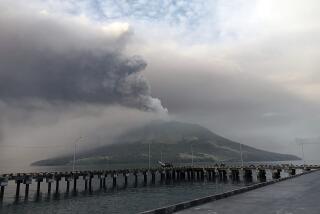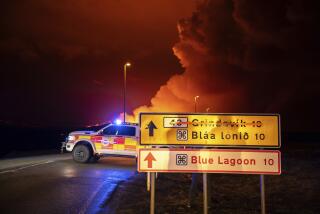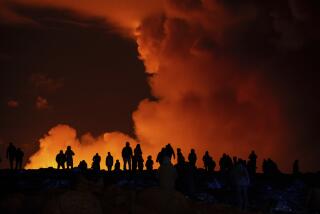Cool magma, Mt. Hood and the future of volcano eruption prediction
For 100,000 years, a pod of cool magma has been sitting mostly immobile beneath the Mt. Hood volcano. Consider it cold storage.
As long as the magma stays cool, the volcano will not erupt. Cool magma is like peanut butter straight from the fridge — difficult to move.
But if the conditions are right, that magma can liquefy in just a few months, potentially leading to an eruption, according to new research.
Hot magma from deep in the Earth’s crust bubbles up, mixes with the cool magma and causes it to liquefy. And when the cool, solid magma becomes less viscous and more runny, the volcano is in danger of exploding — sending red-hot lava out the volcano’s top.
“Some people imagine that beneath a volcano is a bubbling vat of magma just ready to go at any time,” said Adam Kent, a geologist at Oregon State University. “But we’ve found that the magma under Mt. Hood is in this mobile state maybe less than 1% of the total time it has been there.”
In a new study in the journal Nature, Kent and his co-author, Kari Cooper of UC Davis, used radioactive dating to determine that the lava from Mt. Hood’s last two eruptions — 220 years ago and 1,500 years ago — had been stored for up to 100,000 years beneath the volcano.
The scientists also analyzed crystals that formed in the lava to determine how hot the magma had been for most of that time.
“Crystals grow only at a certain temperature,” said Kent. “If it is too hot, they dissolve, and if it is too cold, they don’t grow.”
From this method, the research team determined that for nearly all the time the pod of magma has been around, it has remained at or below 750 degrees Celsius (1,382 degrees Fahrenheit). So it is only when the magma gets warmer than this that Mt. Hood will erupt.
The study, funded by the National Science Foundation, may help scientists predict future volcanic eruptions. Kent said researchers could conceivably use seismic waves to detect when the magma pod beneath Mt. Hood has liquid present. This wouldn’t necessarily mean the volcano was going to erupt, however, but it would mean an eruption was possible.
Kent said the next step in this research is to learn more about cool magma pods beneath other, larger volcanoes.
“We’d like to move on to other systems that have bigger eruptions — Mt. Pinatubo in the Philippines is a much bigger eruption to go look at,” he said.
Follow me on Twitter for more like this.
[For the Record, 4:58 p.m. PST Feb. 17: An earlier version of this post said magma becomes more viscous as it gets warmer. In fact, it gets less viscous and more runny.]







